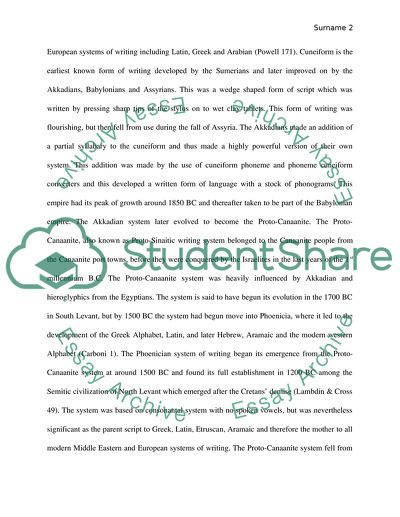Cite this document
(Proto-Canaanite Writing System Influence on Phoenician and Greek Research Paper, n.d.)
Proto-Canaanite Writing System Influence on Phoenician and Greek Research Paper. Retrieved from https://studentshare.org/history/1762390-proto-canaanite-writing-system-influence-on-phoenician-and-greek-writing-systems
Proto-Canaanite Writing System Influence on Phoenician and Greek Research Paper. Retrieved from https://studentshare.org/history/1762390-proto-canaanite-writing-system-influence-on-phoenician-and-greek-writing-systems
(Proto-Canaanite Writing System Influence on Phoenician and Greek Research Paper)
Proto-Canaanite Writing System Influence on Phoenician and Greek Research Paper. https://studentshare.org/history/1762390-proto-canaanite-writing-system-influence-on-phoenician-and-greek-writing-systems.
Proto-Canaanite Writing System Influence on Phoenician and Greek Research Paper. https://studentshare.org/history/1762390-proto-canaanite-writing-system-influence-on-phoenician-and-greek-writing-systems.
“Proto-Canaanite Writing System Influence on Phoenician and Greek Research Paper”, n.d. https://studentshare.org/history/1762390-proto-canaanite-writing-system-influence-on-phoenician-and-greek-writing-systems.


